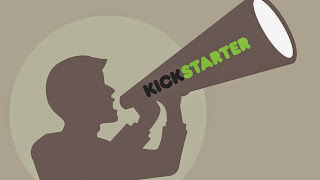
In an era where the Internet is bursting with consumer generated content and budding entrepreneurs with unique ideas, Kickstarter’s grassroots-meets-empowered-user philosophy is allowing more people than ever before to bring products and services that solve problems and satisfy needs.
- Pebble -- A smart watch starting at $150 designed for the super nerdy (or the super connected) starting that syncs with your phone to keep you constantly connected, even if your phone isn't on your person. The goal for this Kickstarter was $100,000...but it ultimately earned over $10 million in pledges. The company has since created a second version of its watch.
- Formlabs -- Finally--an affordable, professional 3D printer! The company's goal was $100,000 but they earned nearly $3 million pledges through Kickstarter from over 2,000 backers.
- Start Up Bros created this infographic highlighting Kickstarter's top projects.
Based on events over the last few days, Start Up Bros will have
to update that infographic. On May 29,
2014, Reading Rainbow started a Kickstarter project, hoping to earn $1 million
in 35 days in order to put Reading Rainbow on the web, build a specialized
classroom version, and provide it free to schools in need.
We know literacy is important…but why?
- Because today, 1 in 4 kids in the US will grow up illiterate…
- And kids who can’t read at grade level by 4th grade are 400% more likely to drop out of high school
- As of 2011, America was the only free-market country where the current generation was less well educated than the one before.
- Here are the complete details of the Reading RainbowKickstarter.
 "That great swooshing sound you just heard was the entire Internet opening its wallets simultaneously."
"That great swooshing sound you just heard was the entire Internet opening its wallets simultaneously."
I get chills when I read that on Day 2, May 30th, the project had amassed a total of $2 million. Reading Rainbow changed its goal to $5 million, where they could now be available for free in 7,500 classrooms instead of 1,500, and be optimized for Mobile, Android, Consoles, and OTT boxes. And by day three, May 31st, the project had earned $3 million.
Tonight, I created a Kickstarter account and became one of the six million backers. I made a $10 contribution to the Reading Rainbow project because...
- I believe in literacy and education
- I've been a bookworm since I was 4
- I can't get the theme song out of my head and I'm swimming a pool of nostalgia
- I've got goose bumps on an 80-degree day. I'm incredibly moved by millions of people coming together to help others and our future.
If you remember the Reading Rainbow in your classroom, or if you believe that literacy can make a difference in one's success in life, I encourage you to become a backer and bring Reading Rainbow back for every child, everywhere.


